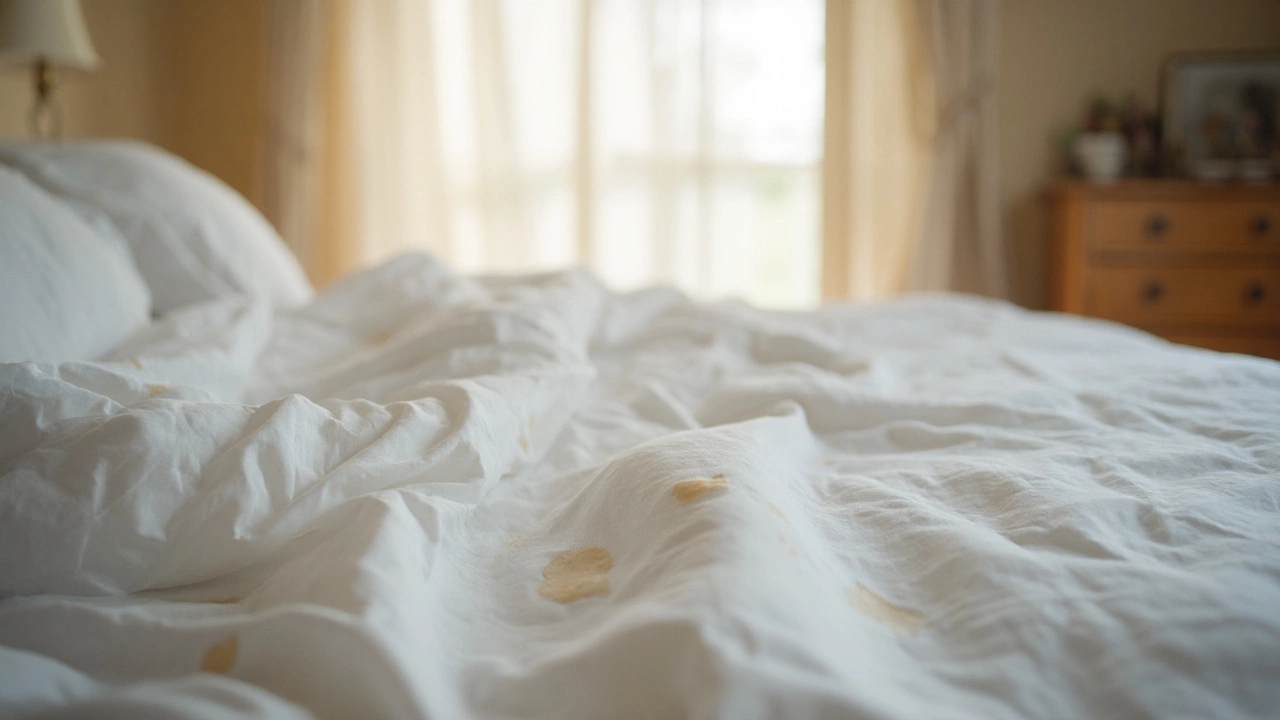What Color Are Sperm Stains and How to Clean Them
If you’ve ever wondered what a sperm stain looks like, you’re not alone. Most people expect a bright white patch, but reality is messier. Depending on the surface, age, and exposure to light, the stain can shift from creamy white to yellowish, pink, or even brown. Knowing these colors helps you spot the stain quickly and treat it before it sets.
Fresh sperm is usually a milky white because of the high protein content. On light fabrics like cotton sheets or pillowcases, the stain often appears as a faint, almost invisible white spot. As the semen dries, proteins oxidize and turn a light yellow or straw color. If it sits on darker fabrics, you might see a dull pink or gray‑ish ring because the background color changes how the stain reflects light.
Why Stains Change Color Over Time
Two main things cause the color shift: oxidation and exposure to air or heat. As the liquid evaporates, the sperm cells break down and the proteins brown, similar to how a cut apple turns brown. Sunlight or a hot dryer can speed up this process, turning a once‑white spot into a faint tan or brown. That’s why you might notice a stain looking different after a wash cycle.
Another factor is the material you’re cleaning. Synthetic fibers like polyester trap moisture longer, so the stain stays whitish for a while. Natural fibers like cotton let water escape faster, leading to quicker discoloration. Knowing what you’re dealing with tells you which cleaning method will work best.
Simple Steps to Spot and Remove Sperm Stains
First, act fast. The sooner you treat the area, the easier it is to lift the proteins. Dab a cool, damp cloth on the spot – never rub, because rubbing pushes the stain deeper. If the fabric is washable, rinse the back of the stain with cold water to flush out as much as possible.
Next, apply a gentle enzyme cleaner. Enzyme cleaners break down protein‑based stains, making them ideal for sperm. Spray a small amount on the stain, let it sit for 5‑10 minutes, then blot with a clean towel. For upholstery or carpet, scrub lightly with a soft brush after the enzyme solution.
If you don’t have an enzyme cleaner, a mix of liquid dish soap (like Dawn) and warm water works in a pinch. Add a teaspoon of soap to a cup of water, dab onto the stain, and let it sit before rinsing. Avoid hot water – it can set the protein, making removal harder.
Finally, launder the item as usual, using the coolest setting the fabric allows. Check the stain before tossing it into the dryer; heat will lock it in. If any trace remains, repeat the enzyme step before the next wash.
Whether you’re cleaning a mattress, a sofa, or a sheet, recognizing the color changes of sperm stains gives you a head start. Spot the milky white, yellow, or pink hues, act quickly with cold water and an enzyme cleaner, and you’ll keep your home looking fresh without a professional call. Need extra help? Dandy Fox Cleaning Services can tackle stubborn stains and leave your space spotless.

Sperm Stain Color: What It Looks Like and Tips for Cleaning
Discover what color sperm stains are, how they change, and effective ways to remove semen stains from bedding, clothing, and upholstery. Science meets practical advice.
Read More